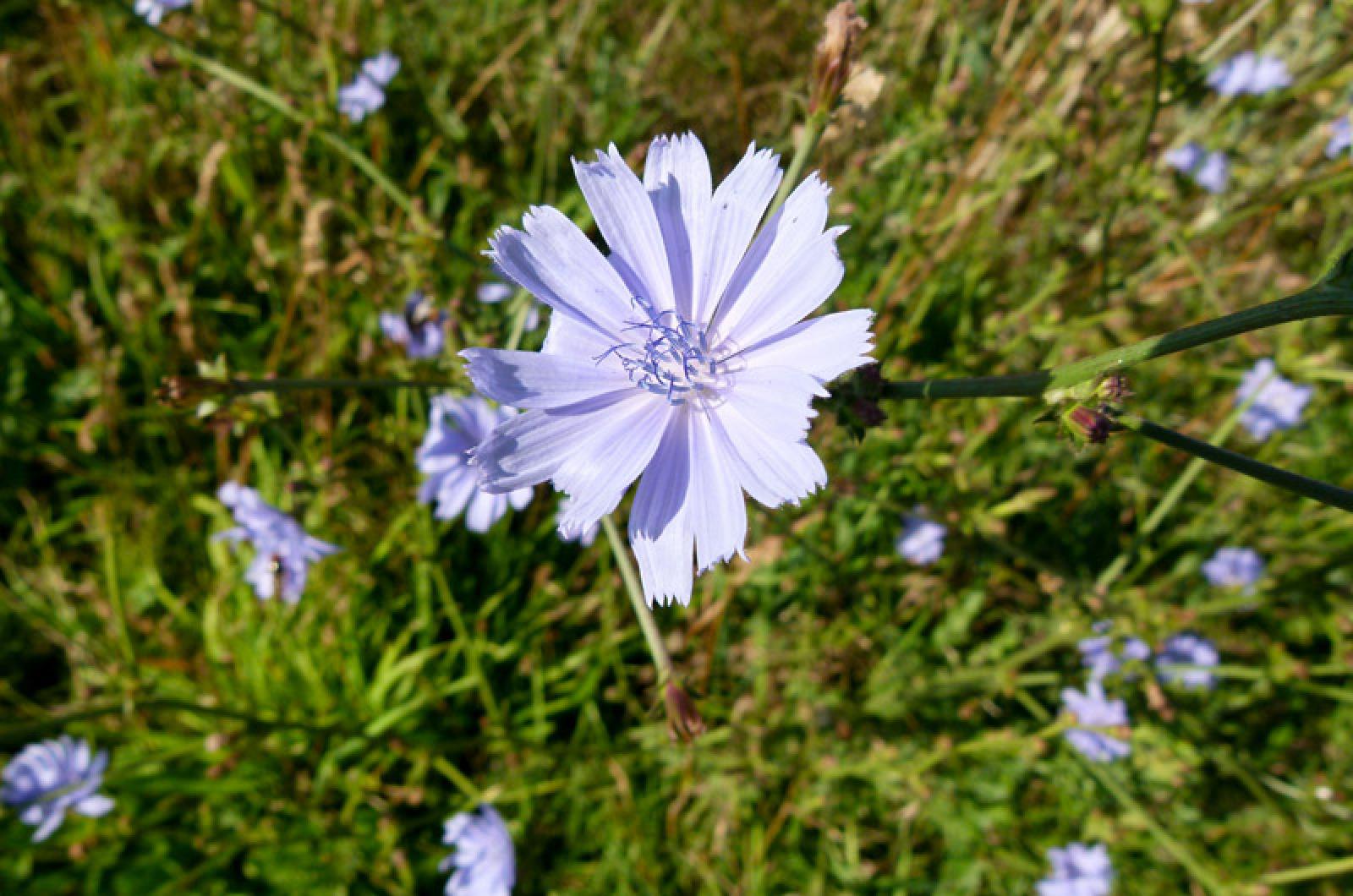John Updike’s place in American literature is secure. He may also have a place in botanical history. In both areas, he seems to have a talent for finding beauty in some not-so-beautiful places. For instance, he has waxed poetic about chicory, a plant that boldly grows in some questionable locations:
Show me a piece of land that
God forgot—
a strip between an unused sidewalk,
say,
and a bulldozed lot, rich in
broken glass—
and there, July on, will be chicory,
Chicory’s appeal clearly goes beyond its ability to inhabit those undesirable places. As Updike notes, it is food, fodder and a feast for the eyes and spirit.
Gorgeous blue flowers that resemble daisies bloom late July through September, giving rise to this plant’s alias, “blue daisies.” The depth of their color varies as they follow the sun. Morning brings the brightest blues, which fade after the sun reaches its zenith in the sky.
Lore maintains that this flower was formerly a maiden that had refused advances from the sun. To punish her, she was turned into a chicory flower that is daily forced to stare at the sun and then fade at the presence of its might. These flowers are edible, adding color to salads and other dishes, though their taste is quite mild.
The other parts of this plant are also edible. The leaves of this non-native species are a popular green in Europe, especially favored by Italians who add garlic and olive oil to create a healthy, though somewhat bitter, side vegetable. These leaves are best in the spring and should be boiled in a few waters to reduce their bitterness.
Through history and cultures, chicory has served many. The root — roasted, dried, and pulverized — is used to spice up coffee or as a caffeine-free alternative. Napoleon encouraged the use of chicory when he sought to make France independent of coffee imports. And during the American Civil War, when coffee was not easy to come by, it provided a welcome substitute. Most famous for this type of drink is Café du Monde in New Orleans, whose coffee is still mixed with roasted chicory. Perhaps this will provide a local ingredient inspiration to our Island coffee roasters in Chilmark.
As fodder for livestock, chicory can’t be beat, since it is reputed to reduce parasites and worms in the gut. Humans benefit, too, from this plant that treats jaundice, spleen problems and constipation, and is also believed to encourage the release of gallstones.
Chicory’s other names include blue weed and blue sailor. That last name comes from another legend, where another maiden falls in love with a sailor who leaves for the sea. She sits patiently on the roadside waiting for his return until the gods take pity on her and turn her into this flower.
These lovelorn maidens of the legends would be better advised to forget their blues and find their independent spirit. Wild, free, uncultivated plants which happen to be edible, useful and tasty are rare enough, and should always be celebrated. So the next time you find chicory on the menu, or listed as an ingredient, raise your fork (or coffee cup) in celebration of this glorious green.
Suzan Bellincampi is director of the Felix Neck Wildlife Sanctuary in Edgartown, and author of Martha’s Vineyard: A Field Guide to Island Nature.




Comments (1)
Comments
Comment policy »